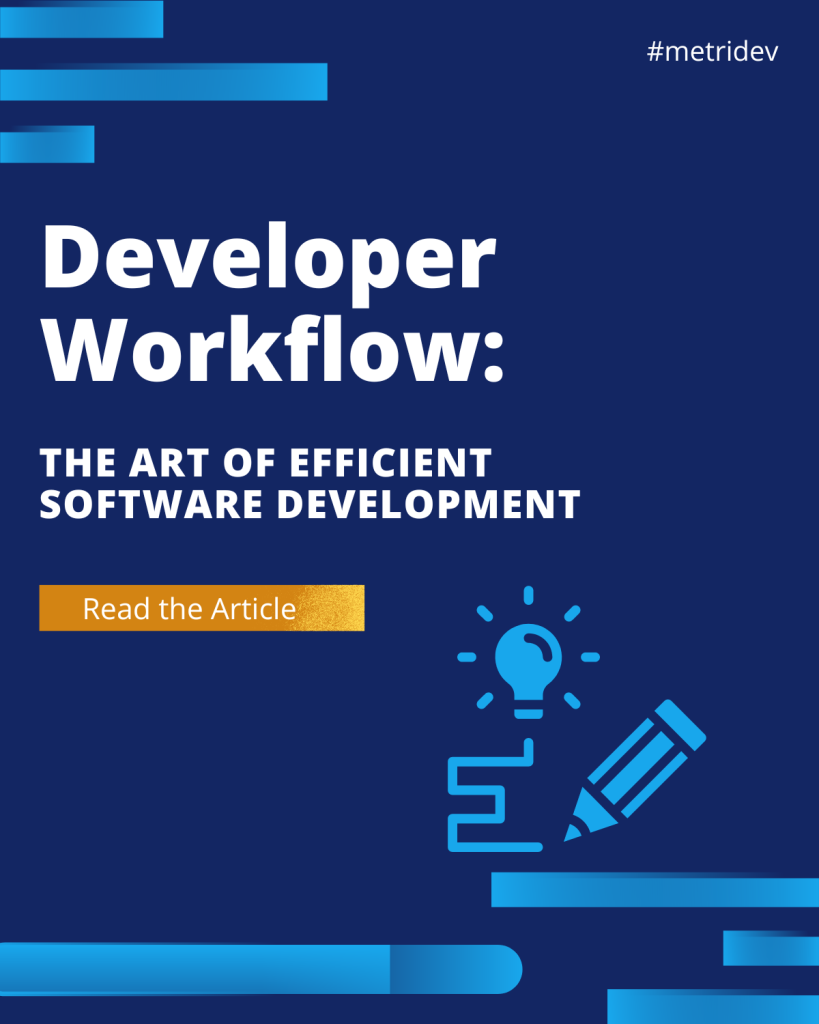Introduction
In the dynamic and competitive landscape of the IT industry, the concept of “engineering velocity” has emerged as a crucial factor in determining the success and growth of organizations. Engineering velocity, a measure of the speed and efficiency with which software development teams deliver new features, bug fixes, and improvements, has become a critical metric for companies seeking to stay ahead of the curve.
This article delves into the intricacies of engineering velocity, exploring its definition, calculation, and the pivotal role it plays in the IT industry. It examines the factors that influence engineering velocity, strategies for improving it, and the tools and technologies that can optimize this crucial metric. Additionally, the article explores the differences between engineering management and engineering leadership, and the vital role of leadership in driving engineering velocity.
What is Engineering Velocity?
Engineering velocity is a measure of the rate at which a software development team delivers new features, bug fixes, and improvements to their products or services. It is a key indicator of a team’s productivity, efficiency, and ability to respond to changing market demands and customer needs.
Engineering velocity is typically calculated by tracking the number of completed tasks, the time taken to complete them, and the overall impact of those deliverables on the product or service. This metric helps organizations understand the pace at which their development teams are working and identify areas for improvement.
How do you Calculate Engineering Velocity?
Calculating engineering velocity involves several factors, including the number of tasks completed, the complexity of those tasks, and the time taken to complete them. One common method for calculating engineering velocity is the use of story points, which are a relative measure of the effort required to complete a given task.
To calculate engineering velocity, organizations can use the following formula:
Engineering Velocity = Total Story Points Completed / Total Time Elapsed
This formula provides a quantifiable measure of the team’s productivity and efficiency, allowing organizations to track progress, identify bottlenecks, and make data-driven decisions to improve their software development processes.
The Importance of Engineering Velocity in the IT Industry
In the fast-paced and ever-evolving IT industry, engineering velocity emerges as a crucial driver of success. Organizations that can consistently deliver new features, bug fixes, and improvements at a rapid pace are better equipped to respond to changing market conditions. Also to meet customer demands, and stay ahead of the competition. Moreover, high engineering velocity enables companies to quickly bring new products and services to market. Thereby giving them a competitive advantage. Additionally, rapid iteration and refinement of offerings based on customer feedback become possible. Efficiently addressing bugs and issues ensures a seamless user experience, while also allowing organizations to adapt to changing industry trends and technological advancements. Furthermore, a high engineering velocity helps attract and retain top talent by demonstrating a dynamic and innovative work environment. Consequently, by prioritizing and optimizing engineering velocity, IT organizations can position themselves for long-term success and growth in the industry.

Factors that Impact Engineering Velocity
Several factors can influence the engineering velocity of a software development team, including:
- Team Composition and Collaboration: The skills, experience, and communication dynamics within the team can significantly impact their ability to work efficiently and deliver high-quality work.
- Development Processes and Methodologies: The software development methodologies (e.g., Agile, Waterfall) and the processes used to manage tasks, prioritize work, and track progress can affect engineering velocity.
- Tools and Technologies: The tools and technologies used by the development team can enhance or hinder their productivity.
- Organizational Culture and Leadership: The overall culture of the organization, including its approach to risk taking, decision-making, and employee empowerment, can either support or impede engineering velocity.
- External Factors: Market conditions, customer demands, and regulatory changes can also impact the team’s ability to deliver new features and improvements at a consistent pace.
Understanding and addressing these factors is crucial for organizations looking to optimize their engineering velocity and drive long-term success.
How to Improve Engineering Velocity?
Improving engineering velocity necessitates a multi-faceted approach that tackles both the technical and organizational aspects of software development. Numerous strategies exist for enhancing engineering velocity. Firstly, organizations can streamline development processes by adopting agile methodologies like Scrum or Kanban. Thereby improving task prioritization, collaboration, and continuous delivery. Secondly, investing in automation tools and technologies. For example, continuous integration/continuous deployment (CI/CD) pipelines, these can automate repetitive tasks, streamline deployment, and enhance code quality. Thirdly, fostering a culture of continuous improvement within the team encourages a growth mindset. This helps empower members to identify and address bottlenecks, experiment with new approaches, and continuously learn and improve.
Fourthly, promoting effective communication, knowledge sharing, and cross-functional collaboration helps break down silos and enhances team productivity. Additionally, prioritizing the reduction of technical debt by allocating dedicated time and resources ensures the codebase remains maintainable and scalable. Moreover, implementing effective monitoring and feedback loops involves regularly tracking and analyzing engineering velocity metrics. Also gathering feedback from stakeholders, and using these insights to inform continuous improvement efforts. By deploying these strategies, organizations can unleash the full potential of their software development teams and drive sustained improvements in engineering velocity.
What is the Velocity of Software Engineering?
The velocity of software engineering, also known as engineering velocity, is a measure of the rate at which a software development team delivers new features, bug fixes, and improvements to their products or services. It is a key indicator of a team’s productivity, efficiency, and ability to respond to changing market demands and customer needs.
Calculating the velocity of software engineering typically involves tracking the number of completed tasks, the time taken to complete them, and the overall impact of those deliverables on the product or service. This metric helps organizations understand the pace at which their development teams are working and identify areas for improvement.
Challenges and Obstacles in Achieving High Engineering Velocity
While improving engineering velocity stands as a crucial goal for many IT organizations, several challenges and obstacles can hinder their efforts. Firstly, the complexity of software systems presents a significant challenge. With interdependent components and legacy code making it challenging to maintain a high pace of development and delivery. Additionally, organizational silos and communication barriers contribute to the problem. These impede the flow of information and decision-making processes within the organization.
Moreover, inadequate attention to technical debt leads to a deteriorating codebase, making it increasingly challenging to implement new features efficiently. Furthermore, skill gaps and talent shortages among software engineers can hamper a team’s ability to deliver high-quality work consistently. Moreover, changing business requirements, influenced by rapidly evolving market conditions and shifting customer demands, can disrupt the development process. Lastly, resistance to change within organizational cultures can hinder the implementation of strategies to improve engineering velocity. Addressing these challenges necessitates a comprehensive approach, involving aligning organizational priorities, investing in talent development, and fostering a culture of continuous improvement.
Best Practices
To effectively measure and track engineering velocity, organizations should consider the following best practices. Firstly, establish clear metrics by defining and aligning on key indicators. For example, story points completed, cycle time, or lead time. Secondly, implement consistent tracking mechanisms. Ensure that the development team records and reports relevant metrics using a centralized project management or reporting tool. Thirdly, analyze trends and patterns by regularly reviewing engineering velocity data to identify areas for improvement.
Additionally, benchmark and set goals. Compare the team performance against industry standards and historical data, then establishing realistic targets for enhancement. Furthermore, gather stakeholder feedback regularly to understand perspectives on team performance from product owners, customers, and executive leadership. Aligning metrics with business outcomes is essential, demonstrating the impact of improved velocity on organizational objectives and key performance indicators. Finally, foster a data-driven culture by encouraging the team to use velocity data for decision-making, experimentation, and continuous improvement efforts. By adhering to these practices, organizations can effectively measure, track, and optimize engineering velocity.
What is the Difference Between Engineering Management and Engineering Leadership?
While engineering management and engineering leadership are often used interchangeably, there are distinct differences between the two:
Engineering Management:
- Focuses on the day-to-day operational aspects of software development, such as task allocation, resource management, and process optimization.
- Ensures that the development team is working efficiently and effectively to deliver on project requirements and deadlines.
- Emphasizes metrics, KPIs, and data-driven decision-making to optimize team performance.
Engineering Leadership:
- Provides strategic direction and vision for the software development organization.
- Inspires and motivates the team to achieve ambitious goals and drive innovation.
- Fosters a culture of continuous learning, experimentation, and improvement.
- Aligns the team’s efforts with the organization’s overall business objectives and long-term strategy.
Effective engineering leadership is crucial for driving high engineering velocity. It sets the tone for the team’s mindset, prioritizes the right initiatives, and empowers the team to continuously improve their processes and outputs.
The Role of Leadership in Driving Engineering Velocity
The role of leadership in driving engineering velocity cannot be overstated. Leaders who foster a culture of innovation, empower their teams, and align the organization’s goals with the development process can significantly impact the team’s ability to deliver new features and improvements at a rapid pace.
Key responsibilities of leaders in driving engineering velocity include:
- Establishing a Clear Vision and Strategy. Defining a clear and compelling vision for the organization’s software development efforts. And also aligning the team’s work with this strategic direction.
- Empowering and Enabling the Team. Providing the necessary resources, tools, and support to enable the development team to work efficiently and effectively.
- Fostering a Culture of Continuous Improvement. Encouraging a growth mindset, where team members are empowered to identify and address bottlenecks. Moreover, experiment with new approaches, and continuously learn and improve.
- Removing Obstacles and Barriers. Proactively identifying and addressing organizational, technical, or process related obstacles that may impede the team’s ability to deliver high-quality work at a consistent pace.
- Championing Agile Practices. Promoting the adoption and implementation of agile methodologies, which have been proven to enhance engineering velocity.
- Aligning Metrics and Incentives. Ensuring that the team’s performance metrics and incentive structures are aligned with the organization’s engineering velocity goals.
By embracing these leadership responsibilities, organizations can empower their software development teams and drive greater success in the IT industry.
Conclusion
In the dynamic and competitive IT industry, engineering velocity has emerged as a critical driver of success. By understanding the factors that influence it, implementing strategies to optimize it, and fostering a culture of continuous improvement, organizations can position themselves for long-term growth and market dominance.
To learn more about how to drive success in the IT industry, read our article Engineers as Managers: the Potential of Technical Minds.








Leave a Reply